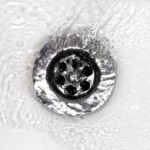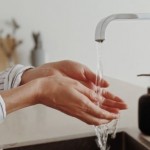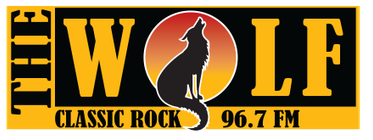Get Caught Up On the Basics of Your Home’s Plumbing System
The start of the school year is fast approaching, which means it’s time for the youngsters to head to class and learn all kinds of new things. But the adults could stand to benefit from a little education, too - especially when it comes to their home’s plumbing systems. Most homeowners don’t give much thought to their plumbing systems until something goes wrong. But it pays to have even a basic understanding of the key principles and components of the home’s plumbing, not just to be more prepared if and when something does go wrong but also to help prevent issues in the first place.
Where Your Water Comes From - And Where It Goes
From there, it’s pumped through the city via underground water mains. A large pipe called a service lateral line carries water from the main to the home’s water meter, where it is then diverted to all of the home’s faucets and fixtures through a network of supply pipes - with some passing through the water heater first.
Any time water is used, the home’s drainage system uses gravity to send it down to the home’s main sewer line, which delivers it either to the city sewer main or an underground septic tank on the property. A home’s drainage system relies on rooftop air vents to allow wastewater to travel freely down the drain instead of getting trapped, the way liquid stays trapped in a straw when the top is sealed.
The Wide World of Plumbing Fixtures
Every home is outfitted with various plumbing fixtures, but not everyone knows what constitutes a plumbing fixture. Essentially, it’s any appliance, apparatus, or piece of hardware that facilitates the delivery or drainage of water.
The most obvious ones are faucets, showerheads, sinks, tubs, toilets, and water heaters. Then, of course, there’s the dishwasher, washing machine, and most modern refrigerators. These connect to “outlet boxes” built into a wall, typically having separate hot and cold water supply valves. Outdoor plumbing fixtures include hose bibs, irrigation systems, and landscape drains - even rain gutters and downspouts are technically a form of plumbing fixture.
Why Drain Cleaning Is So Important
Of all the aspects of a home’s plumbing system, the drains and drain pipes typically experience the most difficulties - not to mention the most unpleasant ones. It’s not all that surprising, considering what they have to deal with. Hair, dirt, soap scum, grease, and other waste are constantly being washed down the drains.
With all this gunk, some of it is bound to get stuck and build up inside the drains. It usually starts with a nasty odor, then water backs up and drains slowly, and before long, the drain is completely clogged. Many people try DIY or store-bought fixes, but these aren’t always effective and can damage the plumbing.
That’s where professional drain cleaning comes in. Pro plumbers use high-pressure hoses with special nozzles to scour the sides of pipes and blast away any obstructions. They can do this even as far down as the main sewer line, where many blockages occur. But drain cleaning isn’t just a remedy; it’s also a powerful preventative measure. Any homeowner who wants to protect their plumbing system would do well to include drain cleaning in their regular plumbing maintenance routine.
About All Clear Plumbing
For years, All Clear Plumbing has been proud to serve the Belleville, NJ community. Their licensed and insured technicians are punctual, courteous, attentive, and always strive to leave every home better than they found it. All Clear offers up-front pricing, beneficial membership plans, and 24/7 emergency service. Call now for plumbing services!



























